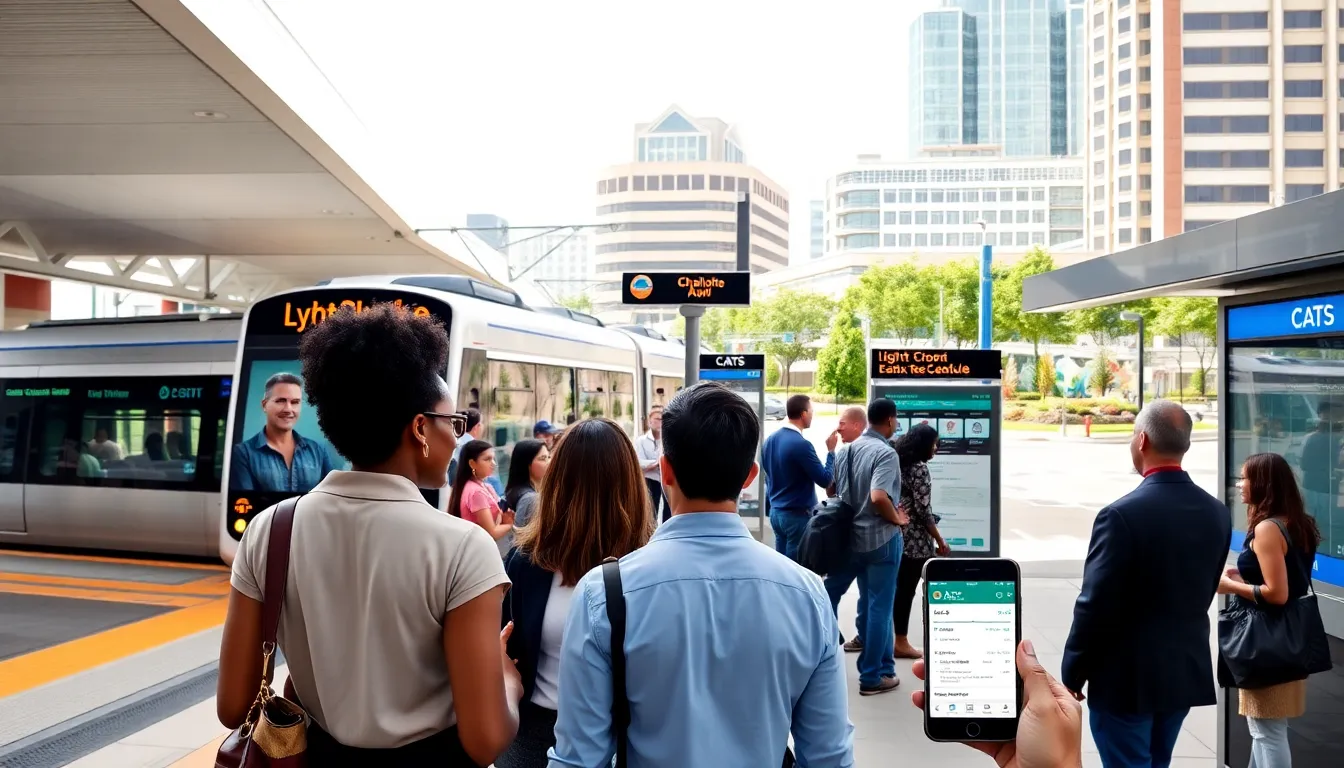Charlotte’s public transit system is like a rollercoaster ride, sometimes thrilling, sometimes a bit bumpy, but always an adventure waiting to happen. Whether you’re a local trying to navigate the Queen City or a newcomer just looking to discover what makes it tick, knowing your way around the transit options can save you time and money. And let’s be honest, who doesn’t want to dodge the headache of traffic? In this systematic exploration, we’ll cover everything from bus routes to future innovations that promise to keep Charlotte moving at full speed.
Table of Contents
ToggleOverview of Charlotte Public Transit System

Charlotte’s public transit system, commonly referred to as the Charlotte Area Transit System (CATS), provides a multifaceted approach to mobility in and around this vibrant city. The system includes light rail, buses, and streetcars, serving residents and visitors alike with an efficient means to traverse urban landscapes. As a major city, Charlotte continually strives to enhance the reliability and reach of public transit, reducing congestion and fostering sustainability. Travelers can easily access CATS services via the official website or mobile apps, making planning a breeze.
Service Areas and Accessibility
CATS operates in multiple counties, ensuring a broad service area. The light rail line, known as the Lynx Blue Line, extends from the University area to the southern part of Charlotte, connecting numerous neighborhoods and significant locations. With recent expansions, residents in surrounding areas can now enjoy seamless access to the city’s core. Paths to accessibility are crucial here: CATS offers services for individuals with disabilities, guaranteeing that everyone can navigate Charlotte relatively easily.
History and Development of Public Transit in Charlotte
The evolution of public transit in Charlotte has been quite a journey of transformation. Originally, horse-drawn streetcars made the rounds in the late 1800s, setting the stage for a growing urban landscape. The city saw its first electric streetcars in the early 1900s, marking a significant pivot toward modern public transport. Post-World War II brought further changes, with the rise of personal vehicles influencing a decline in public transit use.
By the 1990s, but, civic leaders recognized the critical need for a revitalized transit system. The development of the Lynx Blue Line was a game changer. Opened in 2007, it not only reinvigorated public interest in transit but also promoted walkable communities along its route. Fast forward to today, Charlotte’s commitment to expanding and improving public transit is evident, aiming for solutions that prioritize functionality and sustainability.
Types of Public Transit Services
Charlotte’s public transit offerings are diverse, catering to a variety of commuter needs. At the heart of the service are the buses, which crisscross the city, providing regular and frequent stops. The light rail, a favorite among commuters, helps cut travel time for those journeying from the suburbs to downtown.
Bus Services
Buses in Charlotte are easy to catch, with numerous lines connecting significant neighborhoods and business hubs. Riders appreciate the affordable fares, and some routes operate until late at night, providing flexibility for evening events.
Light Rail Services
The Lynx Blue Line is not just a mode of transport: it’s an experience. With comfortable seating and efficient service, riders enjoy traveling above ground through some of Charlotte’s most beautiful landscapes. The upcoming Lynx Silver Line aims to replicate this success with additional routes planned for the near future.
Streetcar Services
For a touch of historic charm, the city features a streetcar service that connects sectors of the city that might be overlooked by buses and light rail. This not only serves as a transit option but also adds character to Charlotte’s urban environment.
Key Transit Routes and Destinations
Navigating Charlotte’s public transit is about knowing the key routes that can take you where you need to go. The Lynx Blue Line is particularly crucial, linking various important destinations from the bustling Uptown business district to the vibrant neighborhoods along the route.
Notable Stops on the Lynx Blue Line
Key stops include:
- Uptown: Home to numerous offices, restaurants, and entertainment options.
- South End: A trendy spot known for its breweries and art galleries.
- University City: With schools and research centers, it’s a hub for students and professionals alike.
Essential Bus Routes
Plus to the light rail, bus routes like the Route 9 (which travels between East Charlotte and Uptown) and Route 11 (serving the North Tryon Street corridor) are vital. These lines support access to major hubs such as hospitals, shopping centers, and more.
Accessibility and Affordability
Accessibility and affordability are two pillars of Charlotte’s public transit system. CATS is designed with inclusivity in mind, ensuring that everyone can access public transport without substantial financial burden.
Financial Accessibility
Fares are relatively inexpensive and cater to different demographics, including students, seniors, and individuals with disabilities. Monthly passes are available, allowing regular commuters to save money while also reducing their carbon footprint.
Physical Accessibility
Beyond fares, CATS is committed to being physically accessible. Buses and light rail vehicles are equipped with features such as low floors for easy boarding and designated seating for those who need it. Besides, the paratransit service provides door-to-door transport for users with disabilities, ensuring they are not left behind.
Future Developments and Improvements
Charlotte is not just resting on its laurels when it comes to public transit. The city is actively pursuing innovations to enhance the system, addressing issues such as congestion and sustainability.
Upcoming Projects
Plans for the Lynx Silver Line are on the table, promising further expansion of the light rail network. This project aims to connect the southeast and southwest of the city, providing a much-needed link for those traveling between different parts of Charlotte.
Sustainability Initiatives
Also, CATS is exploring electric and hybrid buses, reducing the carbon footprint of public transport. As they also work toward smart transit technologies, think real-time tracking and digital ticketing solutions, Charlotte is making sure its public transit is fit for the 21st century.
